The Sui Dynasty was founded by Yang Jian in the year 581 and it initially reigned over only Northern China. Sui forces defeated Chen dynasty in 589 to re-unify China after around three centuries. The reign of Yang Jian, or Emperor Wen of Sui, is considered a high point in Chinese history with improvements in governance, trade and agriculture. However the Sui dynasty began to decline during the reign of Wen’s son Emperor Yang and it came to an end in 619, soon after Emperor Yang was assassinated by his General. Though it was one of the shortest lived major dynasties in Chinese history, the Sui made several important contributions including the construction of the famous Grand Canal. Here are 10 interesting facts about the major emperors and important events; as well as the founding, reign and fall of the Sui dynasty of China.
#1 SUI DYNASTY WAS FOUNDED IN 581 BY YANG JIAN
The Sui Dynasty was preceded by the Northern and Southern dynasties period which lasted from 420 to 589 and was marked by civil war and political chaos. During the latter part of this period, Northern Zhou (not to be confused with the Zhou dynasty which reigned from 1046 BC to 256 BC) reunified Northern China. Yang Jian was a high official who served with distinction during the reigns of Emperor Wu and Emperor Xuan of Northern Zhou. Jian’s daughter Yang Lihua was married to Emperor Xuan. After Emperor Xuan died at the age of 21, her stepson was installed as the emperor while he was still a child. Jian was appointed regent in 580 and the following year he seized the throne and established the Sui Dynasty.
#2 THE LITERAL MEANING OF THE WORD SUI IS “TO FOLLOW”
Yang Jian was the Duke of Sui when he served the Zhou court with the character Sui literally meaning “to follow” and implying loyalty. He decided to name his newly founded dynasty Sui and took the name Emperor Wen. Though he had his rivals including many members of the Zhou family executed, he is known as the “Cultured Emperor”. His major policies included the spread of Buddhism, re-establishment of the Confucian bureaucrats in important positions and the emphasis on Confucian Classics. Emperor Wen also initiated a series of reforms to strengthen the Sui Empire to prepare it for the upcoming wars.
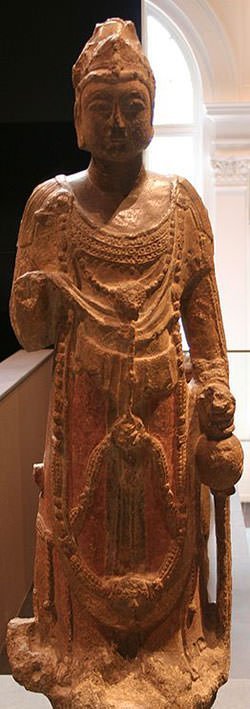
#3 EMPEROR WEN SECURED AND STABILIZED THE SUI EMPIRE
After assuming the throne, Emperor Wen took immediate action to protect the frontiers of his new state. China had a formidable northern neighbor in the Turks but they were splitting into two empires and Emperor Wen aided the split by supporting the ruler of the western Turks. The eastern Turks ultimately became nominally submissive to Sui and so did the Goguryeo in the northeast. Emperor Wen also strengthened the defenses of his empire in the north by repairing the Great Wall. Thus, by the late 580s he had stabilized and secured his state and was in a position to launch a campaign to reunify the whole country.
#4 SUI DYNASTY REUNIFIED CHINA AFTER AROUND THREE CENTURIES
In 588, the Sui dynasty amassed 518,000 troops along the northern bank of the Yangtze River to invade Southern China which was ruled by the Chen dynasty. Chen general Xiao Mohe was soon defeated and captured. In 589, Sui forces seized the Chen capital Jiankang and Chen Shubao, the emperor of the Chen Dynasty, surrendered. After the fall of the Han dynasty in 220 AD, China had entered an age of fragmentation which saw several centuries of disunity amid warfare by rival kingdoms. Sui’s conquest of Chen reunified China after around three centuries, since the fall of Western Jin Dynasty in 316.
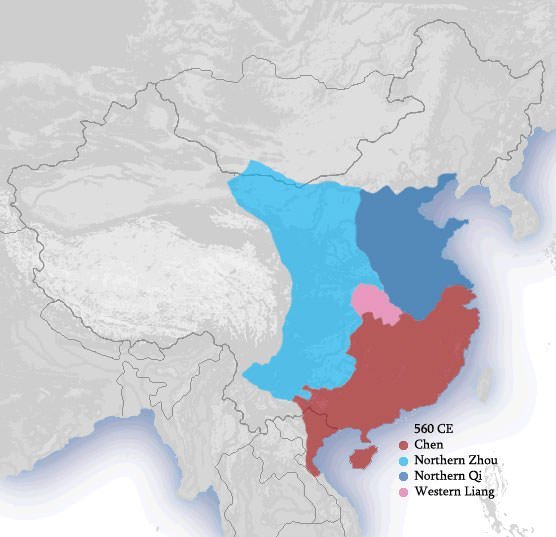
#5 SUI DYNASTY MARKED THE RE-ESTABLISHMENT OF THE RULE OF ETHNIC HAN CHINESE
Han Chinese is an ethnic group who now constitute more than 90% of the population of China. Emperor Wen was an ethnic Han Chinese whose clan claimed descent from the Han Dynasty general Yang Zhen. Emperor Wen abolished all anti-Han policies of Northern Zhou and through his conquests he was ultimately able to reinstall the rule of ethnic Han Chinese in the entire China proper. Sui dynasty was also able to integrate former nomadic ethnic minorities within the Chinese culture.
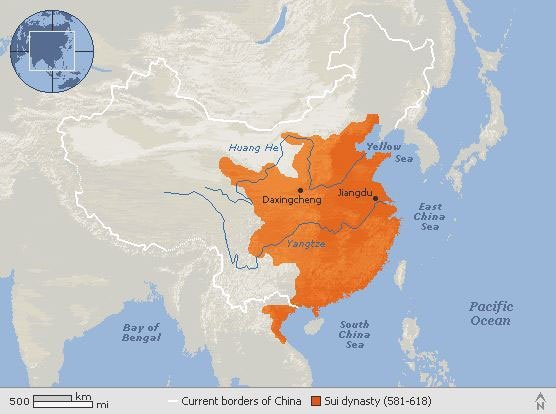
#6 THE REIGN OF EMPEROR WEN IS CONSIDERED A HIGH POINT IN CHINESE HISTORY
Apart from his military conquests, Emperor Wen of Sui established uniform institutions of government throughout the country and simplified the taxation. He was a hardworking administrator; and he employed able ministers who were carefully selected, frequently rotated and were under constant checks. Emperor Wen took steps to eradicate nepotism and corruption. He put into effect a penal code and ensured that local officials studied and enforced the new laws. He made many improvements to infrastructure and initiated the construction of the Grand Canal. Also his policies led to a large agricultural surplus which supported the rapid growth of population to an unprecedented peak. The reign of Emperor Wen is considered one of the apexes in the 2000 year imperial period of China.
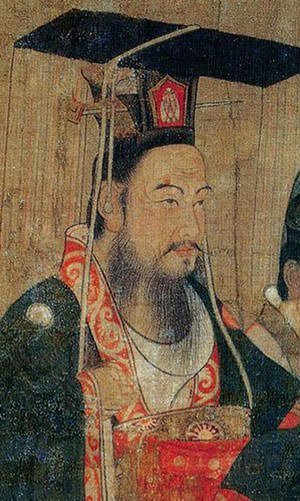
#7 LUOYANG WAS MADE THE SECOND CAPITAL CITY OF SUI DYNASTY IN 605
Emperor Wen died in 604 and was succeeded by his son Yang Guang who took the throne as Emperor Yang of Sui. Though not established with certainty, it is said that Guang killed his father to assume power. Several large construction projects were undertaken during the reign of Emperor Yang, the most important of which was the completion of the Grand Canal, whose scale was enormously enlarged from the time it was initiated during his father’s reign. The main achievement of Yang is considered the integration of south more firmly into a unified China. Among other things, he married a princess from the southern state of Liang and made Luoyang in central China the second capital city in 605, the first being Chang’an.
#8 SUI EMPIRE REACHED ITS GREATEST EXTENT DURING EMPEROR YANG’S REIGN
Emperor Yang ordered several military expeditions including a campaign against the Champa state in present-day Vietnam which resulted in Sui being able to extend its control over a part of Vietnam. Also Tuyuhun people were driven out of Gansu and Qinghai, and Sui colonies were established along the great western trade routes. Yang’s expeditions led to the Sui dynasty reaching its greatest territorial extent. However, his four military campaigns against the Goguryeo (one of the three kingdoms of Korea) proved to be disastrous leading to huge loss of life and leaving the empire bankrupt.
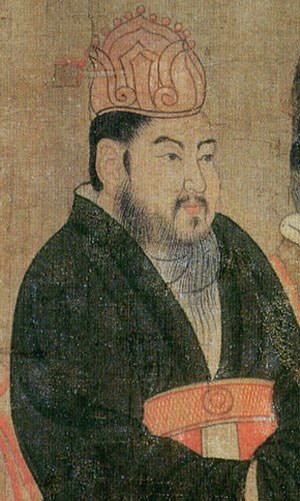
#9 EMPEROR YANG WAS ASSASSINATED BY HIS GENERAL
The large scale construction projects, including the rebuilding of the Great Wall of China in which the lives of nearly six million workers was lost, strained the economy and angered the workforce employed. This was worsened by constant military campaigns especially the disastrous Goguryeo-Sui Wars. All this was accompanied by rebellions which further weakened the agricultural base and the economy. On top of this, Emperor Yang became more and more luxuriously self-indulgent increasing the anger among the officials as well as the general populace. With China in turmoil, the army officers planned a coup and in 618, Emperor Yang was assassinated by the general Yuwen Huaji.
#10 SUI WAS ONE OF THE SHORTEST REIGNING MAJOR DYNASTIES IN CHINA
Emperor Yang’s grandson Yang Tong was in charge of the second capital Luoyang and after the death of his grandfather, Sui officials declared him the emperor. However in 619, one of these officials Wang Shichong forced Yang Tong to yield the throne to him and soon had Tong executed. This marked the end of the Sui Dynasty which lasted only thirty-eight years from 581 to 619 making it one of the shortest reigning major dynasties in the history of China. Sui dynasty was followed by the Tang dynasty which ruled over China for around three centuries till 907. Though it was short-lived, Sui dynasty made several important contributions including the reunification of China, construction of major public works and many cultural developments.
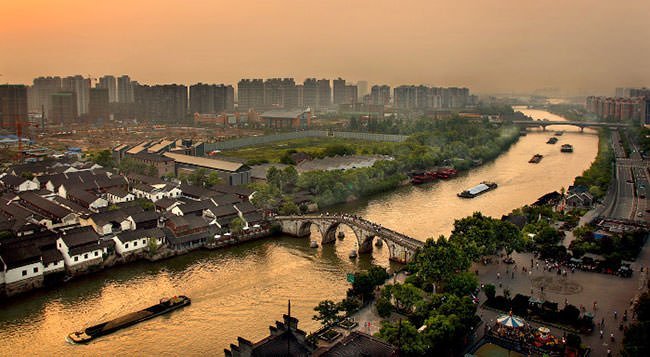
BATTLE OF SALSU
Fought in 612, the Battle of Salsu is considered one of the most glorious military triumphs in Korean history. With an army of over one million, Emperor Yang of Sui invaded the Goguryeo kingdom of Korea. Eulji Mundeok, among the greatest ever military generals of Korea, defended against the Sui forces for months. He pretended to retreat into Goguryeo territory, where an ambush was prepared at the Salsu River. Mundeok had cut off the flow of water of the river with a dam in advance. When the Sui troops were halfway across the river, he opened the dam causing onslaught of water to drown thousands of enemy soldiers. The Goguryeo cavalry then charged the remaining Sui forces, inflicting enormous casualties and forcing the surviving Sui troops to retreat. With more than 300,000 casualties, the Battle of Salsu is listed among the most lethal “classical formation” battles in world history.

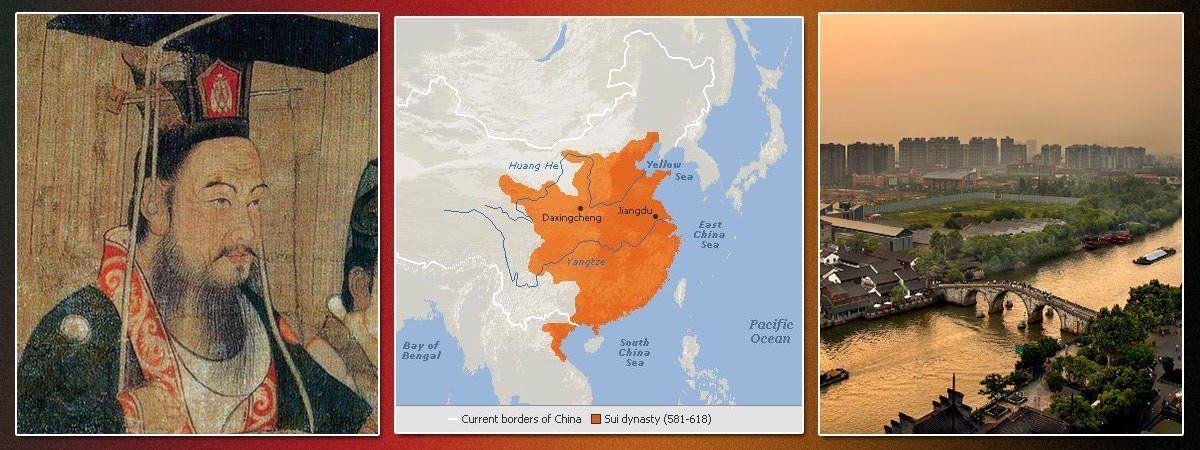
I live learning about this shi dynasty and the tang dynasty ,song dynasty, yuan dynasty, ming dynasty
They are comprehensive intros about the Sui Dynasty. Also, Yang Jian’s queen Dugu was a famous empress in Chinese history; after Yang Guang departed, Sui was then replaced by his cousin’s new empire.